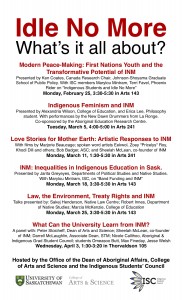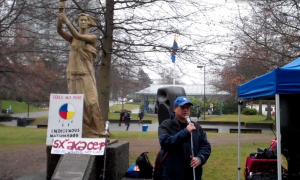Linda Givetash, The Record — To give students a boost in the final weeks of the academic term, Conestoga College hosted a powwow Saturday.
The annual event, held at the recreation centre at the Doon campus, brought a sense of home to the campus for aboriginal students and taught non-aboriginal community members about the culture.
“The powwow is a really good time for (students) to bring their families together and a lot of students do better after this powwow,” said Myeengun Henry, manager of aboriginal services for the college. “We have students from way up north and they miss their families … so when their families come and visit them, they get rejuvenated.”
Members of aboriginal communities from across the province and even the U.S. came to the event. It included traditional ceremonies, food, dance, crafts and more.
The powwow comes right at the end of reading week for students, marking the final half of the term. Henry said it brings students back to campus and gets them in the mindset for school after the week off.
Keeping an eye on her four-year-old son running around the recreation centre, community and criminal justice student Tina Allardyce, 28, said she has volunteered with the powwow for the last three years to help promote her culture on campus.
“It’s great that it’s a part of Conestoga College … and that we can bring our community and the Native members of the community in Kitchener-Waterloo here,” she said. “The more people that come out to learn and experience the aboriginal traditional culture is amazing.”
The education the powwow provided for non-aboriginal visitors reflects the current state of the Idle No More movement that launched in November. Henry explained that although the movement is no longer in the spotlight, activism and public awareness is ongoing.
“Idle No More has moved to a different thing now,” Henry said. “Instead of being on the streets and doing rallies, we’re starting to take them to institutions and schools to allow people to ask questions on what is about.
Read More: The Record

 Follow
Follow

